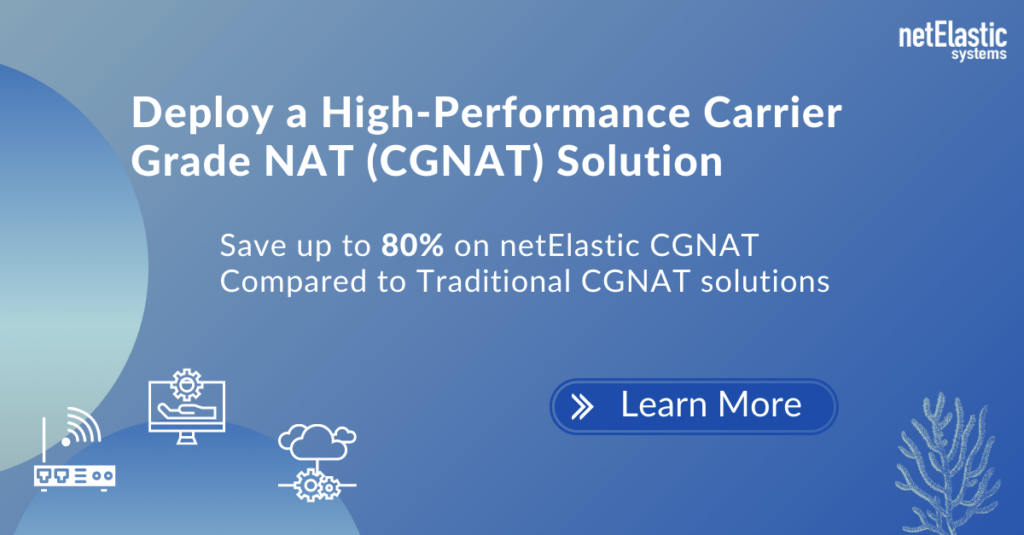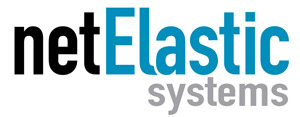Many broadband service providers are using CGNAT to meet IPv4 exhaustion challenges. However, some providers may still be unsure whether they should purchase CGNAT.
To help you decide, below are five reasons to buy a CGNAT solution:
1. Conserve Your Limited IPv4 Addresses

IPv4 exhaustion creates serious challenges for broadband service providers as they sign up new subscribers and expand into new markets and geographies. CGNAT helps alleviate this problem since its primary goal is to conserve IPv4 addresses. By sharing a public IP address among many private IP addresses, CGNAT limits the number of public IP addresses an organization uses, conserving its IPv4 addresses.
2. Migrating from IPv4 to IPv6 May Not be Practical
Migrating from IPv4 to IPv6 is lengthy, expensive, and complicated. Broadband providers must engineer and configure all their routers, switches, and servers to support IPv6, which may also involve replacing incompatible customer-premise equipment (CPE). Even if your network supports IPv6, not all broadband home devices do, so IPv4 is still needed.
3. IPv6 Isn’t Ready Yet
IPv6 isn’t backward compatible. So, the transition to IPv6 doesn’t have a standardized solution for communicating with internet-connected devices that still use IPv4. And people still want access to IPv4 websites.
Complete IPv6 adoption means that devices, network infrastructure, and websites must be fully IPv6. Without it, IPv4 and IPv6 must coexist.
Also, subscribers aren’t asking for IPv6, and there’s little consumer demand. The bottom line is that IPv4 will be around for a long time.
4. CGNAT Enables a Smooth Transition to IPv6
CGNAT and Dual Stack capabilities will allow broadband providers to conserve IPv4 address space while implementing a native IPv6 network alongside their IPv4 network.
A Dual Stack approach enables providers to layer on IPv6 for existing and new customers with little to no change to their existing IPv4 network. IPv4 content and applications continue to run normally, while IPv6-aware applications and content can start using the IPv6 network without the need for expensive tunneling or translation infrastructure.
On the IPv4 network, CGNAT will enable broadband providers to grow subscribers without purchasing more IPv4 addresses. As IPv6 adoption increases, more traffic will route over the native IPv6 network. The IPv4 network will continue to get less usage over time and can eventually be turned off (without any network redesign).
5. The Cost Savings are Significant
Many broadband providers are buying CGNAT for a simple reason: lower costs. And in many cases, much lower costs.

Purchasing IPv4 addresses on the open market is expensive. Let’s do the math: If a broadband provider buys 2,000 IPv4 addresses (for $40 per address), this would cost $80,000. If a provider bought 5,000 addresses, this would cost $200,000. That’s a very high price tag for many regional and rural broadband providers.
Bringing it All Together
There are many compelling reasons to purchase a CGNAT solution. We highlighted five in this blog:
- CGNAT conserves your IPv4 addresses
- Migrating from IPv4 to IPv6 may not be practical
- Current devices and websites are still using IPv4
- CGNAT enables a smooth transition to IPv6
- Significant cost savings
Now that we’ve discussed why you should purchase CGNAT, the question becomes, which CGNAT solution should you buy?
It depends. For large Tier 1 carriers with large budgets, CGNAT solutions from traditional CGNAT vendors may be the best choice. These CGNAT offerings have the highest translation performance and typically have the most advanced features. Many of these fully loaded CGNAT solutions have been built to accommodate the specific requirements of large carriers. Of course, these fully loaded CGNAT solutions also have the highest prices.
Small and regional broadband providers may not need the same CGNAT features as large carriers, and they may not be able to afford to pay for features they don’t need.
An Affordable CGNAT
netElastic CGNAT is a cost-effective alternative built for small and regional ISPs . Traditional CGNAT solutions run on expensive proprietary hardware. In contrast, netElastic CGNAT runs on commodity x86 servers. As a result, broadband providers have saved up to 80% by switching to netElastic.
netElastic’s high-performance virtual router technology is at the heart of its CGNAT, and it includes a scalable software architecture that delivers high translation performance. netElastic also supports up to 50,000 subscribers and 8 million NAT sessions.
For service providers looking for a powerful yet economical CGNAT, netElastic delivers unparalleled value with industry-leading price/performance. To learn more, please read the white paper: Can Implementing CGNAT be Easy and Affordable?


